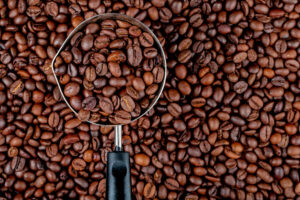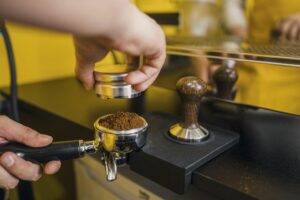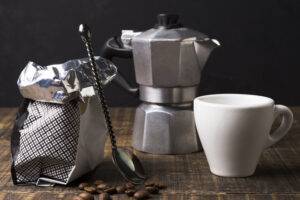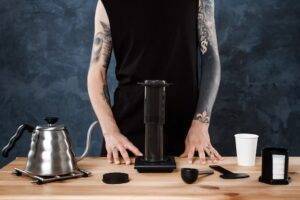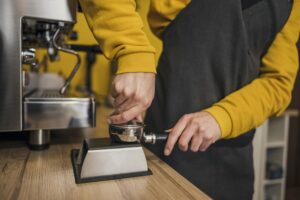
20 Reasons why Coffee Brewed Manually is Better
Coffee has become an integral part of our daily routine, providing us with a much-needed boost of energy and a delightful sensory experience. While there are various methods of brewing coffee, manual brewing techniques have gained popularity among coffee enthusiasts. Brewing coffee manually involves carefully controlling various factors, such as water temperature, grind size, and brewing time, to extract the optimal flavors from the beans. In this article, we will explore 20 Reasons why Coffee Brewed Manually is Better.
Greater Control: Manual brewing methods, such as pour-over or French press, give you full control over the brewing process. You can adjust variables like water temperature, coffee-to-water ratio, and steeping time to tailor the taste according to your preferences.
Freshness: Manual brewing allows you to grind coffee beans just before brewing, ensuring maximum freshness. This results in a more vibrant and flavorful cup of coffee compared to pre-ground coffee.
Customizable Brew Strength: With manual brewing, you have the flexibility to adjust the strength of your coffee by varying the coffee-to-water ratio. This allows you to create a cup of coffee that suits your taste preferences, whether you prefer a bold and strong brew or a milder one.
Enhanced Aroma: Manual brewing methods often involve blooming the coffee grounds, which releases the aromatic compounds trapped within. This results in a captivating aroma that enhances the overall coffee-drinking experience.
Consistency: Manual brewing techniques, when mastered, offer a higher degree of consistency in each cup. By controlling variables precisely, you can replicate your preferred flavor profile consistently.
Appreciation of the Process: Brewing coffee manually fosters a deeper appreciation for the craft. It allows you to connect with the brewing process, from measuring the beans to pouring water, and creates a sense of satisfaction in producing a well-crafted cup of coffee.
Temperature Control: Many manual brewing methods, such as the pour-over technique, allow you to control water temperature more effectively. This ensures that the coffee extracts at the desired temperature range, optimizing flavor development.
Grind Consistency: Manual brewing often requires grinding coffee beans to a specific size, promoting a consistent extraction. The control over grind size allows you to adjust the brewing time, avoiding over or under-extraction.
Experimentation: Manual brewing encourages experimentation with different brewing methods, beans, and ratios. It opens up a world of possibilities to explore various flavors and discover new preferences.
Sustainability: Manual brewing is inherently more sustainable as it eliminates the need for single-use pods or capsules. You can use reusable filters, reducing waste and environmental impact.
Mindfulness: Manual brewing forces you to slow down and be present in the moment. It becomes a mindful ritual, allowing you to savor the process and appreciate the small details that contribute to a great cup of coffee.
Artistic Expression: Manual brewing methods, such as latte art or creative pour-over techniques, offer an opportunity for artistic expression. It adds an element of visual beauty to your coffee, making it a delight for the eyes as well as the taste buds.
Increased Knowledge: By engaging in manual brewing, you can deepen your understanding of coffee. You learn about different beans, brewing techniques, and the impact of variables on flavor, becoming a more informed coffee enthusiast.
Bonding Experience: Manual brewing can be a shared experience, allowing you to connect with others over a common passion for coffee. It becomes an opportunity to bond, exchange brewing tips, and enjoy the process together.
Portability: Manual brewing methods, such as AeroPress or portable pour-over devices, are compact and easy to carry. This makes them ideal for travelers or those who want to enjoy a high-quality cup of coffee on the go.
Cost-effective: Manual brewing methods often require minimal equipment, making them cost-effective in the long run. Compared to expensive coffee machines or capsules, manual brewing offers an affordable way to enjoy excellent coffee.
Versatility: Manual brewing methods are versatile and adaptable to various coffee types. Whether you prefer single-origin beans, specialty blends, or experimenting with different roasts, manual brewing can accommodate them all.
Immersion Brewing: Techniques like French press or AeroPress allow for immersion brewing, where coffee grounds steep in water for an extended period. This results in a full-bodied and rich cup of coffee, accentuating the flavors and nuances of the beans.
Connection to Tradition: Manual brewing techniques have been used for centuries, connecting us to the rich history and traditions of coffee. By brewing manually, you tap into the timeless art of making coffee and carry forward a cultural heritage.
Joy of Mastery: Manual brewing is a skill that can be honed over time. As you refine your technique and develop your palate, the satisfaction of mastering the art of brewing is immensely rewarding.
FAQs
Q1: What is manual coffee brewing?
A: Manual coffee brewing refers to the process of brewing coffee by hand, without the use of automated machines. It involves methods such as pour-over, French press, AeroPress, and various other techniques that require manual control over the brewing variables.
Q2: Why is manual coffee brewing considered better?
A: Manual coffee brewing is often considered better for several reasons, including:
Control: Manual brewing allows precise control over variables such as water temperature, brewing time, and coffee-to-water ratio, resulting in a customized and consistent brew.
Flavor extraction: Manual brewing methods offer better flavor extraction by allowing the coffee grounds to come into direct contact with water for optimal extraction and enhancing the nuances of the coffee’s flavor profile.
Customization: With manual brewing, you have the flexibility to adjust the brewing parameters to match your taste preferences, resulting in a more personalized and enjoyable cup of coffee.
Fresher coffee: Manual brewing allows you to grind the coffee beans just before brewing, preserving the freshness and aroma of the coffee for a more vibrant and flavorful cup.
Appreciation of the process: Manual brewing methods often involve a slower, more hands-on approach, which allows you to appreciate the brewing process and engage with the coffee-making experience.
Brew strength control: Manual brewing methods offer greater control over brew strength, allowing you to adjust the strength by changing factors such as grind size, brewing time, or water-to-coffee ratio.
Sustainability: Manual brewing eliminates the need for disposable coffee pods or filters, reducing waste and promoting a more sustainable coffee brewing experience.
Cost-effective: Manual brewing methods generally require fewer equipment and are more cost-effective in the long run compared to some automated coffee machines.
Portability: Many manual brewing methods, such as AeroPress or pour-over, are portable and travel-friendly, allowing you to enjoy a quality cup of coffee wherever you go.
Versatility: Manual brewing methods offer a wide range of options to experiment with different coffee beans, brewing techniques, and recipes, allowing you to explore and discover new flavors and profiles.
Q3: What are some popular manual coffee brewing methods?
A: Some popular manual coffee brewing methods include pour-over (e.g., Hario V60, Chemex), French press, AeroPress, siphon brewing, Turkish coffee, and cold brew. Each method offers a unique brewing experience and can result in distinct flavors and characteristics in the cup.
Q4: Is manual coffee brewing more time-consuming?
A: Manual coffee brewing methods may require a bit more time and effort compared to automated machines. However, the extra time spent in the brewing process is often regarded as an enjoyable and meditative experience by coffee enthusiasts who appreciate the craftsmanship and precision involved.
Q5: Does manual coffee brewing require special skills or knowledge?
A: While manual coffee brewing methods may require some initial learning and practice to master, they don’t necessarily require special skills or extensive knowledge. With a basic understanding of the brewing principles and some experimentation, anyone can brew a great cup of coffee manually.
Q6: Can I achieve the same flavor as automated machines with manual brewing?
A: Manual brewing methods offer the potential to achieve equal or superior flavor compared to automated machines. The direct control over variables and the ability to adapt the brewing process to your preferences can result in a more nuanced and flavorful cup of coffee.
Q7: Is manual brewing suitable for beginners?
A: Manual brewing methods can be suitable for beginners who are willing to invest a bit of time and effort into learning the basics. Starting with simpler methods like pour-over or French press and gradually exploring other techniques can be a rewarding journey for beginners.
Q8: Can I use manual brewing methods in a commercial setting, such as a coffee shop?
A: Manual brewing methods can certainly be used in a commercial setting, and many specialty coffee shops incorporate manual brewing as part of their offerings. However, it’s important to consider factors like efficiency, consistency, and customer demand when deciding on the brewing methods to use in a busy coffee shop environment.
Q9: Are there any disadvantages to manual coffee brewing?
A: While manual brewing methods have numerous advantages, there are a few potential disadvantages to consider:
Time and effort: Manual brewing can be more time-consuming and require more hands-on effort compared to automated machines, which may not be suitable for everyone, especially those with busy schedules.
Learning curve: Some manual brewing methods may have a learning curve, requiring practice and experimentation to achieve consistent and desirable results.
Consistency: Achieving consistency can be more challenging with manual brewing, as slight variations in brewing parameters or techniques can affect the final taste of the coffee.
Q10: Is manual brewing the only way to enjoy a good cup of coffee?
A: No, manual brewing is not the only way to enjoy a good cup of coffee. Automated machines, such as drip coffee makers or espresso machines, can also produce excellent results when used properly. The choice between manual and automated brewing ultimately depends on personal preferences, best portable coffee maker, convenience, and the desired level of control over the brewing process.
Conclusion:
Coffee brewed manually offers a myriad of advantages that enhance the overall coffee experience. The ability to control variables, appreciate the process, and create a cup tailored to your preferences are just a few reasons why manual brewing stands out. Moreover, it allows you to foster a deeper connection with coffee and explore its diverse flavors. So, if you’re ready to embark on a journey of taste exploration and coffee craftsmanship, best coffee maker machine for home, grab your manual brewing equipment and savor the delights of a perfectly brewed cup of coffee.
Affordable and Efficient: The Best Budget Coffee Makers of 2024
Finding the best coffee maker that doesn’t break the bank can feel like a challenging quest. But with 360CoffeeMaker, we’ve simplified your search for the best home coffee maker that suits your budget. For those who prefer to brew single servings at a time, the best single cup coffee maker of 2024 is undeniably the Keurig K-Mini. Compact, stylish, and efficient, it fits perfectly in any kitchen and caters to the needs of solo coffee drinkers or households where everyone has a different coffee preference.
If you're someone who enjoys a classic brew, the best drip coffee maker of 2024 is the Mr. Coffee 12-Cup Coffee Maker. Not only is it affordable, but it's also easy to use and consistently delivers a flavorful cup. But if you're searching for the absolute best coffee maker overall, look no further than the Black+Decker 5-Cup Coffeemaker. It's affordable, efficient, and provides the perfect balance between traditional brewing methods and modern convenience. Regardless of your choice, these budget-friendly options guarantee a quality brew without the hefty price tag.

